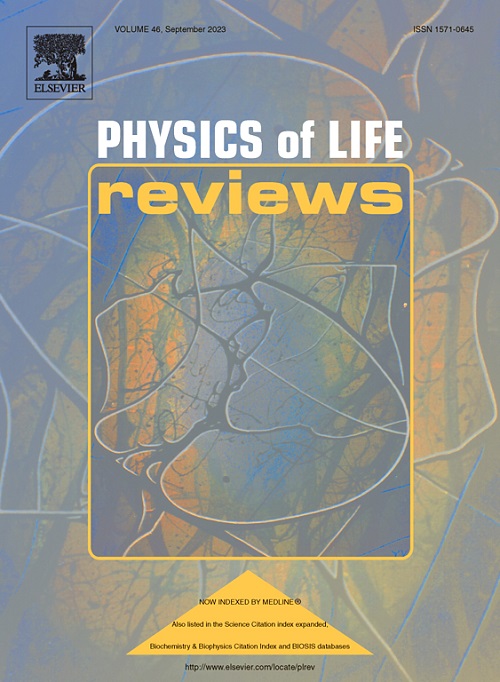From pre-stimulus activity to the contents of consciousness – A spatiotemporal view: Reply to comments on “Beyond task response-Pre-stimulus activity modulates contents of consciousness”
IF 14.3
1区 生物学
Q1 BIOLOGY
引用次数: 0
Abstract
What are the exact neuronal mechanisms of pre-post-stimulus interaction and how can that account for the intrinsically subjective nature of the contents of consciousness? This is the key question lurking behind the various excellent and very thoughtful commentaries to our target article which we group along four main topics and questions. (i) What is the role of neural features like alpha power, phase dynamics, trial-to-trial variability and fractal scale-free dynamics in yielding pre-post-stimulus interaction and its conscious contents. (ii) What do we mean by ‘content’ of consciousness? This concerns its meaning, its characterization as internal or external, and its relation to the basic subjectivity of consciousness. (iii) How does our approach stand to other theories of consciousness like the Dendritic Integration Theory (DIT), GNWT and IIT? This concerns the convergence among the different theories that highlight distinct aspects. (iv) How can we detail the spatiotemporal shaping of the contents of consciousness including their intrinsically subjective nature through pre-post-stimulus interaction? This concerns the details of how the non-additive pre-post-stimulus interaction shapes the subjective nature of our experience of conscious contents, that is, how the neuronal activity connects to the phenomenal features of consciousness. Together, we conclude that the contents of consciousness are shaped primarily in a temporal-dynamic and spatial-topographic way through the non-additive pre-post-stimulus interaction. Such spatiotemporal shaping of the contents in our consciousness constitutes their intrinsically subjective nature which must be distinguished from their (more objective) modulation by cognitive, sensory, affective, and motor functions.
从刺激前活动到意识内容——一个时空视角:对“超越任务反应——刺激前活动调节意识内容”评论的回复
刺激前-刺激后相互作用的确切神经元机制是什么?它如何解释意识内容的内在主观性?这是潜伏在我们的目标文章的各种优秀和非常深思熟虑的评论背后的关键问题,我们将其分为四个主要主题和问题。(i)神经特征如α功率、相动力学、试对试变异性和分形无标度动力学在产生刺激前后相互作用及其有意识内容中的作用。(二)意识的“内容”是什么意思?这涉及到它的意义,它的内部或外部的特征,以及它与意识的基本主体性的关系。(iii)我们的方法与其他意识理论(如树突整合理论(DIT)、GNWT和IIT)相比如何?这涉及强调不同方面的不同理论之间的趋同。(iv)我们如何通过刺激前-刺激后的相互作用来详细描述意识内容的时空形成,包括其内在的主观性?这涉及到非加性刺激前后相互作用如何塑造我们对有意识内容体验的主观本质的细节,也就是说,神经元活动如何与意识的现象特征联系起来。综上所述,我们得出的结论是,意识内容主要是通过非加性的刺激前-刺激后相互作用以时间-动态和空间-地形的方式形成的。这种对我们意识中内容的时空塑造构成了它们内在的主观性,必须与它们(更客观的)由认知、感觉、情感和运动功能调节区分开来。
本文章由计算机程序翻译,如有差异,请以英文原文为准。
求助全文
约1分钟内获得全文
求助全文
来源期刊

Physics of Life Reviews
生物-生物物理
CiteScore
20.30
自引率
14.50%
发文量
52
审稿时长
8 days
期刊介绍:
Physics of Life Reviews, published quarterly, is an international journal dedicated to review articles on the physics of living systems, complex phenomena in biological systems, and related fields including artificial life, robotics, mathematical bio-semiotics, and artificial intelligent systems. Serving as a unifying force across disciplines, the journal explores living systems comprehensively—from molecules to populations, genetics to mind, and artificial systems modeling these phenomena. Inviting reviews from actively engaged researchers, the journal seeks broad, critical, and accessible contributions that address recent progress and sometimes controversial accounts in the field.
 求助内容:
求助内容: 应助结果提醒方式:
应助结果提醒方式:


